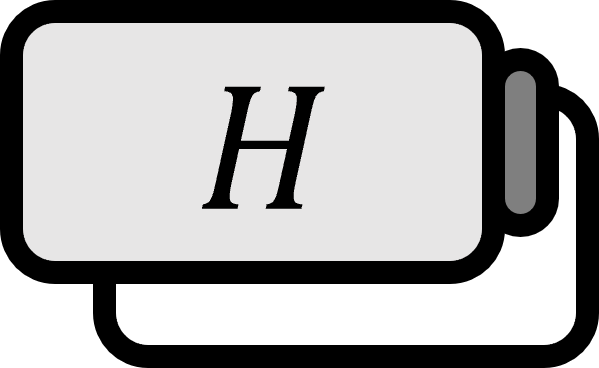Lies Basis
Definition1
Let’s assume that a normalized orthogonal basis $\left\{ \mathbf{e}_{k} \right\}_{k \in \mathbb{N}}$ of a Hilbert space $H$ is given. If surjective $U : H \to H$ is a linear and bounded operator for all $k \in \mathbb{N}$, then $\mathbf{v}_{k} := U \mathbf{e}_{k}$ implies that $\left\{ \mathbf{v}_{k} \right\}_{k \in \mathbb{N}}$ forms a basis of $H$, and the following holds.
$$ \mathbf{v} = \sum_{k \in \mathbb{N}} \left\langle \mathbf{v} , \left( U^{-1} \right)^{ \ast } \mathbf{e}_{k} \right\rangle \mathbf{v}_{k} $$
Explanation
While it is certainly good that we can specifically choose a basis as mentioned above when $U$ is given, one must be careful since the condition of $U$ must be equally favorable. Of course, the identity operator $I$ easily satisfies this, but ultimately it leads to $\mathbf{v}_{k} = \mathbf{e}_{k}$, leaving only a vacuous claim.
Proof
Since $\left\{ \mathbf{e}_{k} \right\}_{k=1}^{\infty}$ is a basis of $V$, for any $\mathbf{v} \in V$ that is not $a_{1} = \cdots = 0$ but $\left\{ a_{k} \right\}_{k=1}^{\infty} \subset \mathbb{C}$, it is represented as follows.
$$ \mathbf{v} = \sum_{k =1}^{\infty} a_{k} \mathbf{e}_{k} $$
By the normal orthogonality of $\left\{ \mathbf{e}_{k} \right\}_{k=1}^{\infty}$, $\left\langle \mathbf{e}_{i} , \mathbf{e}_{i} \right\rangle = 1$ and for $i \ne j$ regarding $\left\langle \mathbf{e}_{i} , \mathbf{e}_{j} \right\rangle = 0$, we have
$$ \left\langle \mathbf{v} , \mathbf{v} \right\rangle = \sum_{k =1}^{\infty} a_{k}^{2} $$
Meanwhile, from $\mathbf{v} = \sum_{k =1}^{\infty} a_{k} \mathbf{e}_{k}$,
$$ \left\langle \mathbf{v} ,\mathbf{v} \right\rangle = \sum_{k =1}^{\infty} a_{k} \left\langle \mathbf{v} , \mathbf{e}_{k} \right\rangle $$
Thus,
$$ \sum_{k =1}^{\infty} a_{k}^{2} = \sum_{k =1}^{\infty} a_{k} \left\langle \mathbf{v} , \mathbf{e}_{k} \right\rangle $$
Summing up,
$$ \sum_{k =1}^{\infty} a_{k} \left( a_{k} - \left\langle \mathbf{v} , \mathbf{e}_{k} \right\rangle \right) = 0 $$
Therefore, for all $k \in \mathbb{N}$, $a_{k} = \left\langle \mathbf{v} , \mathbf{e}_{k} \right\rangle$ must hold.
$$ \mathbf{v} = \sum_{k=1}^{\infty} \left\langle \mathbf{v} , \mathbf{e}_{k} \right\rangle \mathbf{e}_{k} $$
Taking the operator $U$,
$$ U \mathbf{v} = \sum_{k=1}^{\infty} \left\langle \mathbf{v} , \mathbf{e}_{k} \right\rangle \mathbf{v}_{k} $$
Here, the adjoint operator $\left( U^{-1} \right)^{ \ast }$ of $U^{-1}$ uniquely exists due to the Riesz Representation Theorem.
$$ \begin{align*} \mathbf{v} =& U \left( U^{-1} \mathbf{v} \right) \\ =& \sum_{k=1}^{\infty} \left\langle U^{-1} \mathbf{v} , \mathbf{e}_{k} \right\rangle \mathbf{v}_{k} \\ =& \sum_{k=1}^{\infty} \left\langle \mathbf{v} , \left( U^{-1} \right)^{ \ast } \mathbf{e}_{k} \right\rangle \mathbf{v}_{k} \end{align*} $$
Thus, for all $\mathbf{v} \in H$ and $\left\{ \mathbf{v}_{k} = U \mathbf{e}_{k} \right\}_{k=1}^{\infty}$, there uniquely exists $\left\{ c_{k} := \left\langle \mathbf{v} , \left( U^{-1} \right)^{ \ast } \mathbf{e}_{k} \right\rangle \right\}_{k \in \mathbb{N}} \subset \mathbb{C}$ satisfying the following.
$$ \mathbf{v} = \sum_{k =1}^{\infty} c_{k} \mathbf{v}_{k} $$
■
Ole Christensen, Functions, Spaces, and Expansions: Mathematical Tools in Physics and Engineering (2010), p91 ↩︎
